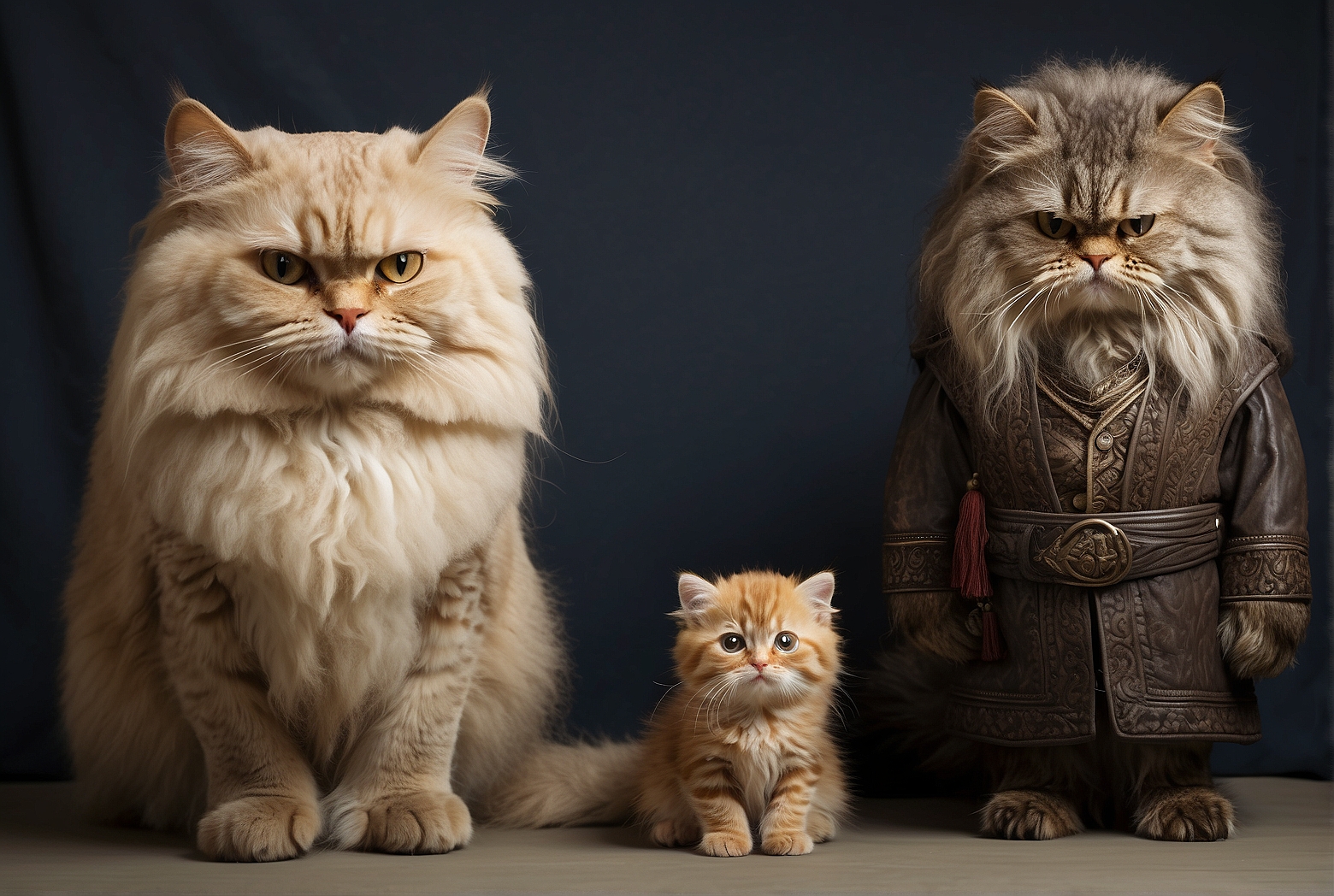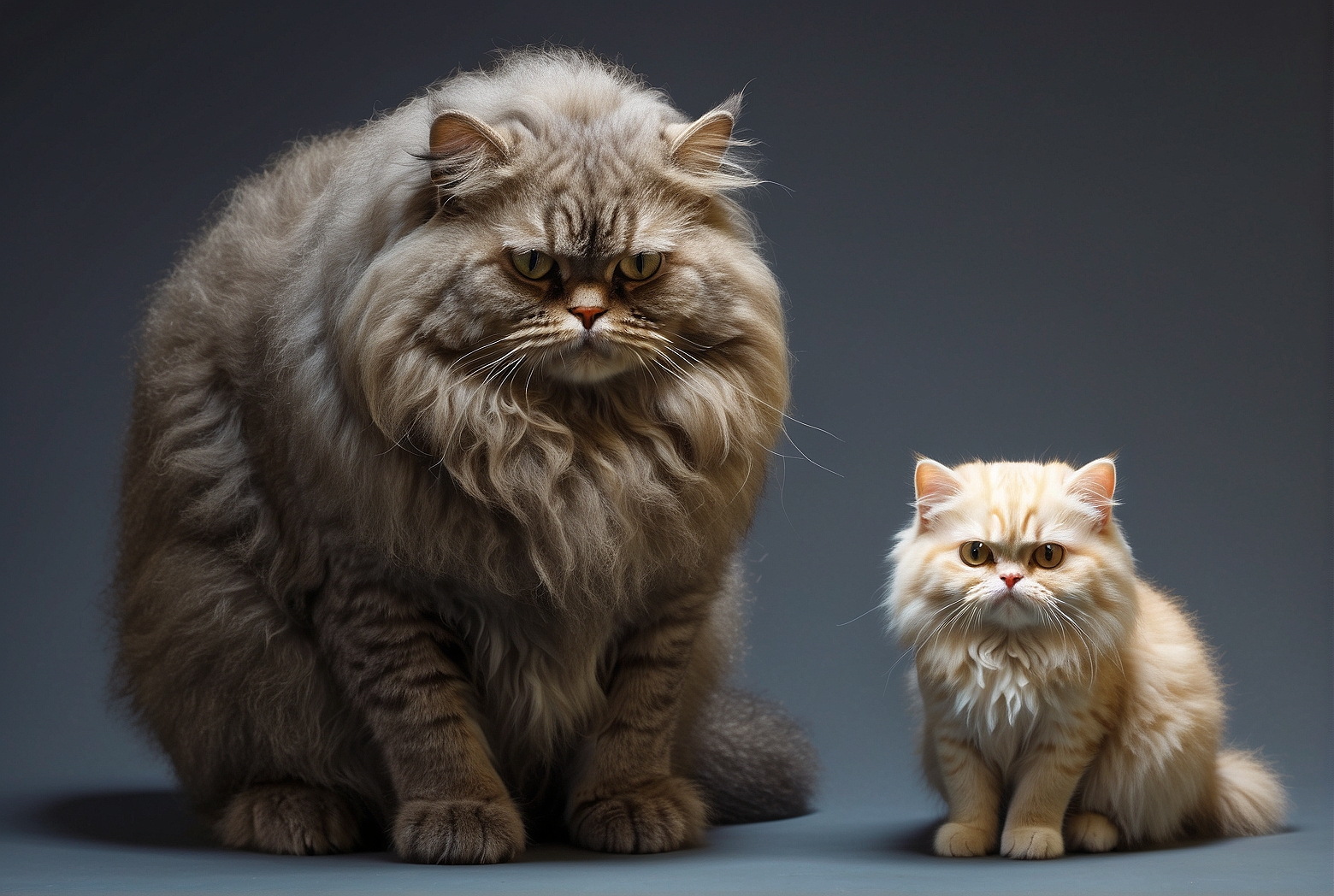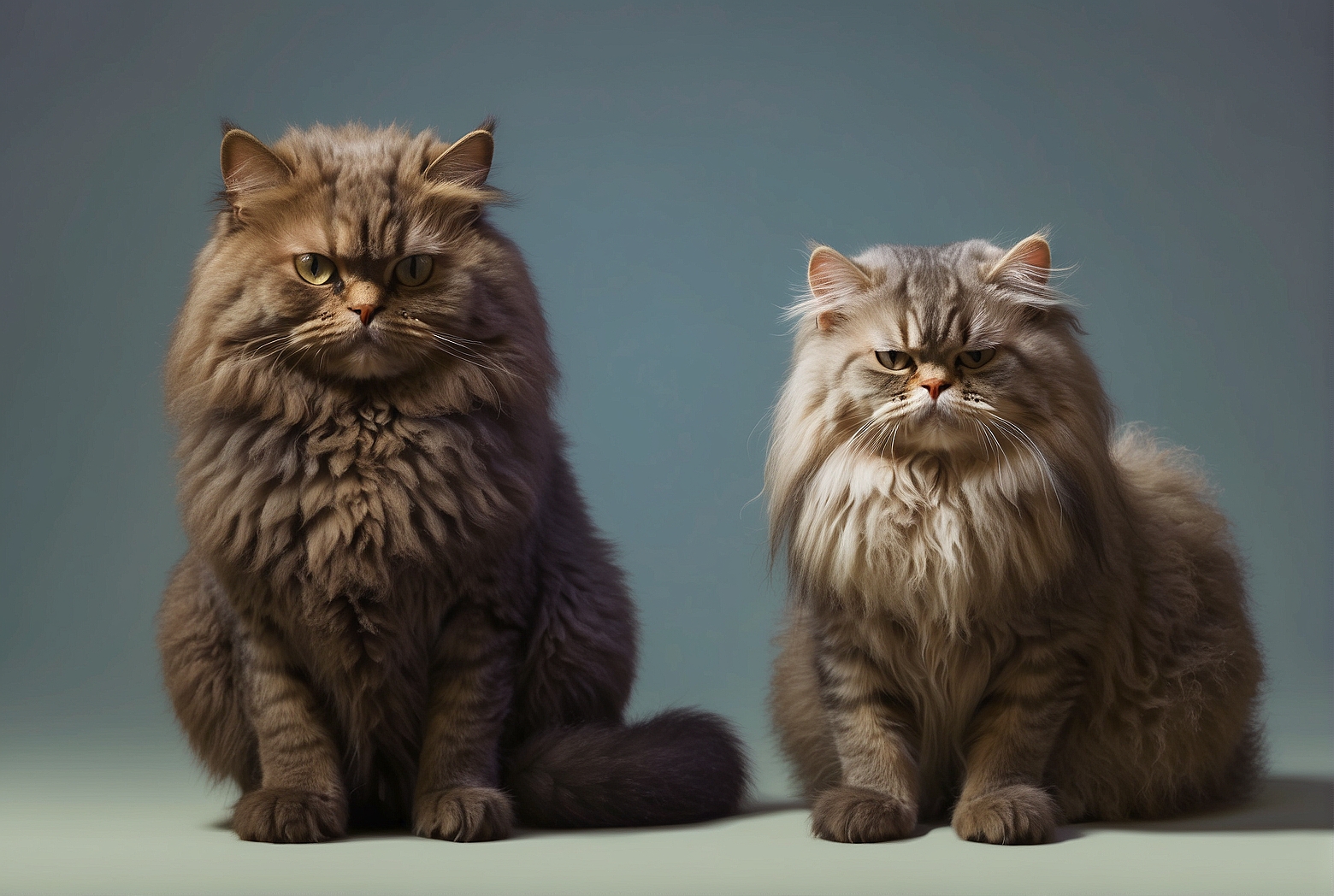Imagine standing in the middle of a bustling street in Iran, surrounded by enchanting Persian architecture and vibrant culture. As you take in the sights and sounds, you become curious about the size comparison of various objects and landmarks in this richly historical country. From the massive Azadi Tower to the intricate details of the Sheikh Lotfollah Mosque, this article will take you on a fascinating journey through Iran’s most iconic landmarks, giving you a sense of their impressive dimensions and leaving you in awe of their grandeur. Whether you’re planning a trip to Iran or simply curious about its cultural heritage, this Persian size comparison will provide a captivating glimpse into the world of Iranian wonders.
Introduction to Persian Size
Defining Persian Size
When it comes to Persian cats, size is an important characteristic that adds to their charm and appeal. Persian cats are known for their stunning beauty and their distinctive size plays a significant role in their overall appearance. Persian size refers to the physical dimensions of these majestic felines, including their body structure, head size, and other physical features. Understanding and appreciating the different aspects of Persian size is essential for all Persian cat enthusiasts.
Importance of Size in Persian Cats
Size holds considerable importance in the world of Persian cats. It contributes to their overall beauty, grace, and elegance. A well-proportioned Persian cat with an ideal size is often regarded as the epitome of feline perfection. Breeders and cat show judges meticulously assess the size of Persian cats when evaluating their standard and breed-specific expectations. Size also affects the cat’s health and well-being, as different sizes may have varying requirements in terms of nutrition, exercise, and grooming.
Variations in Persian Size
Persian cats exhibit variations in size, even within the same breed. While there are established standards for Persian size, individual cats may deviate from these expectations. These variations can be influenced by genetics, environmental factors, nutrition, and overall health. Understanding the factors that affect Persian size and recognizing the range of sizes within the breed allows for a better appreciation of these beautiful felines.
History of Persian Size Comparison
Ancestry of Persian Cats
The Persian breed has a rich history that dates back centuries. These cats are believed to have originated in Persia (modern-day Iran) and were highly valued for their luxurious coats and regal appearance. Throughout history, Persian cats were selectively bred to emphasize certain traits, including their size. This selective breeding aimed to enhance the breed’s physical attributes and resulted in the development of the Persian breed as we know it today.
Selective Breeding and Size Preferences
Over the years, Persian cats’ size and appearance have been influenced by breeders’ preferences. Different breeders may prioritize various characteristics, including size, when breeding Persians. Some breeders aim to produce larger Persians, while others focus on maintaining a smaller, more delicate size. These varying preferences have led to subtle shifts in the average size of Persian cats over time.

Changes in Persian Size over Time
The size of Persian cats has experienced some changes over the years due to selective breeding and evolving breed standards. In the past, larger Persian cats were more common, with a robust and sturdy body structure. However, as preferences shifted towards a more refined and delicate look, breeders started working towards developing smaller Persians. Nowadays, there is a greater emphasis on maintaining an ideal size that strikes a balance between elegance and proportion.
Factors Affecting Persian Size
Genetics and Inheritance
Genetics plays a pivotal role in determining the size of Persian cats. The size of a Persian cat is influenced by the genes it inherits from its parents. Breeding two cats with larger frames may result in offspring that are more likely to be larger in size. Conversely, breeding smaller cats may lead to smaller-sized kittens. Responsible breeders take into account the genetic background of their cats to achieve desired size outcomes.
Environmental Factors
While genetics plays a significant role, environmental factors also contribute to Persian size. The environment in which a Persian cat grows and develops can have an impact on its ultimate size. Factors such as nutrition, living conditions, and overall well-being can influence a Persian cat’s growth and size. A healthy and nurturing environment can support optimal growth, resulting in a cat that meets the breed’s standard size expectations.
Nutrition and Diet
Proper nutrition is crucial for maintaining an ideal Persian size. Persians have specific dietary requirements that must be met to support their growth and overall health. A balanced and nutritious diet, rich in high-quality proteins and essential nutrients, promotes healthy body development and helps maintain the cat’s size within the desired range. Overfeeding or underfeeding can have adverse effects on a Persian cat’s growth and size, so portion control is essential.
Health and Well-being
The general health and well-being of a Persian cat can directly impact its size. Cats that are in good health tend to have better growth rates and reach their genetic potential for size. Regular veterinary check-ups, preventive care, and prompt treatment of any health issues can contribute to optimal growth and development. Prioritizing the overall well-being of a Persian cat will support its size and ensure its long-term health.
Exercise and Physical Activity
While Persian cats are not known for their athletic abilities, they still require exercise and physical activity to maintain an ideal size. Engaging in playtime and providing opportunities for movement can help prevent excessive weight gain and keep the cat in good physical condition. Interactive toys, scratching posts, and short play sessions can stimulate a Persian cat’s natural instincts and help burn calories, promoting a healthy size.

Persian Size vs Other Breeds
Comparing Persian Size with Siamese Cats
When it comes to size, Persian cats and Siamese cats exhibit distinct differences. Siamese cats tend to be more slender and have a more muscular build compared to the Persian breed. While Persians are known for their stocky bodies and rounded features, Siamese cats have a leaner physique and longer, more athletic bodies. These differences in size and body type reflect the contrasting characteristics of the two breeds.
Persian Size Comparison with Maine Coon Cats
Maine Coon cats are famously known for being one of the largest domestic cat breeds. In comparison, Persians have a more compact and delicate body structure. Maine Coons exhibit substantial bone structure, muscular bodies, and overall larger size than Persians. Their size can sometimes even surpass that of small dogs. While both breeds have their unique charm, Maine Coons are undoubtedly the giants of the feline world.
Persian Size Comparison with Scottish Fold Cats
Scottish Fold cats, famous for their adorable folded ears, differ in size from Persians. While Scottish Folds can vary in size, their overall body structure tends to be more compact and muscular compared to Persians. Persian cats, with their larger round heads and heavier bone structure, generally have a more substantial and chunkier appearance. Despite these differences, both breeds possess a certain elegance that makes them highly sought after.
Persian Size vs Bengal Cats
Bengal cats, known for their striking coat patterns reminiscent of wild leopards, differ significantly in size from Persians. Bengals have a lean and agile physique, reflecting their wild ancestry. Persian cats, on the other hand, have a more placid and laid-back nature, which is complemented by their larger and stockier bodies. The size difference between Bengals and Persians is particularly evident when comparing their overall muscular development and body proportions.
Persian Size Comparison with Ragdoll Cats
Ragdoll cats are known for their beautiful blue eyes and relaxed, affectionate nature. When it comes to size, Ragdolls often surpass Persians. Ragdolls exhibit a substantial bone structure and muscular bodies, contributing to their overall larger size. This size difference is particularly noticeable in their height and length. While Persians are not as large as Ragdolls, their plush coats and distinctive facial features make them equally captivating and adored by cat enthusiasts.
Physical Characteristics of Persian Cats
Body Structure
Persian cats have a well-balanced and solid body structure. They possess a stocky and muscular build, with a broad chest and sturdy bone structure. The body of a Persian cat is generally low to the ground and exhibits a rounded appearance. This body structure, combined with their luxurious coat, creates an overall impression of opulence and elegance.
Coat Length and Thickness
One of the most distinctive physical features of Persian cats is their long, flowing coats. Persians have dense, luxurious fur that requires regular grooming to prevent matting. Their coats are known for being thick and silky to the touch, providing them with a regal and luxurious appearance. The coat length and thickness contribute to the cat’s overall size perception.
Facial Features
The facial features of Persian cats are highly recognizable and contribute to their unique charm. They have round faces with full cheeks and soft, expressive eyes. Persian cats often have a shorter and upturned nose, giving them a distinctive “pushed-in” facial structure known as brachycephalic. This facial structure adds to their sweet and innocent expression, further accentuating their size.
Eye Size and Shape
Persian cats are characterized by their large, round eyes that are set wide apart. The eyes are one of the most captivating features of Persians and contribute to their overall size perception. Their eye color varies, with shades ranging from expressive copper to striking blue. The combination of their eye size and intense gaze adds to the allure and charm of these magnificent cats.
Ear Shape and Size
The shape and size of Persian cats’ ears also contribute to their overall size appearance. Persian cats have small, round-tipped ears that are set widely apart on their heads. The ears are covered in fur, which adds to the cat’s plush and rounded look. While their ears may be relatively small compared to other breeds, they perfectly complement the cat’s overall balance and proportions.
Tail Length and Fluffiness
Persian cats have long, full tails that are typically in proportion to their body size. Their tails are covered in dense fur, similar to the rest of their coat, which adds to their overall fluffiness. The tail gives a finishing touch to the Persian cat’s regal appearance, further emphasizing their luxurious size and elegance.
Understanding Persian Size Standards
International Cat Associations’ Standards
Various international cat associations, such as The International Cat Association (TICA) and the Cat Fanciers’ Association (CFA), have established standards for Persian cats. These standards define the ideal size and physical characteristics that reflect the breed’s essence. These standards serve as a reference point for breeders, cat show judges, and enthusiasts when evaluating and discussing Persian cats’ size and conformation.
Breed-Specific Size Expectations
Each cat association’s standard provides specific size expectations for Persian cats. These expectations encompass body structure, head size, overall proportions, and other physical characteristics. Breeders strive to produce Persian cats that meet these size expectations, ensuring that they remain true to the breed’s established standards. Evaluating a Persian cat’s size against these expectations helps maintain the breed’s integrity and preserves its unique characteristics.
Ideal Measurements for Persian Cats
The ideal measurements for Persian cats take into consideration various factors, including body length, height, and overall weight. While variations in size are to be expected within the breed, the ideal Persian size aims for a balanced and proportionate appearance. These measurements provide a guideline for breeders and cat show judges to assess a Persian cat’s size objectively.
Deviations from Standard Sizes
It is important to note that not all Persian cats will conform precisely to the standards set by cat associations. Deviations from standard sizes can occur due to various factors, including genetics, environment, or individual variations within the breed. While these deviations may not meet the precise standard, they do not diminish the beauty or quality of a Persian cat. Each cat is unique and will have its own distinct size and physical characteristics.
Body Size Comparison within Persian Cats
Smaller Persian Variations
Within the Persian breed, there can be variations in body size, including smaller Persians. These smaller Persian cats may exhibit a more delicate and dainty appearance compared to their larger counterparts. Smaller Persians can still possess the breed’s signature features, such as a rounded head and a luxurious coat. Despite their smaller size, these Persians maintain the breed’s elegance and charm.
Standard Persian Sizes
The breed standard for Persian cats encompasses an ideal size range that represents the majority of the breed. Standard Persian cats have a moderate to large body size, with a stocky build and a sturdy bone structure. These Persians possess the classic round head shape, full cheeks, and a well-balanced physique. Standard Persian cats offer a perfect blend of grace and size.
Larger Persian Variations
In addition to smaller variations, larger Persian cats can also be found within the breed. These Persians exhibit a more substantial and robust body structure, often with more prominent features. Larger Persians may have a more significant overall size, including a broader chest and a more pronounced bone structure. Their grandeur and imposing presence set them apart from their standard-sized counterparts.
Factors Influencing Body Size Variations
Various factors contribute to the variations in body size among Persian cats. Genetic inheritance, environmental conditions during growth, and overall nutrition can all impact a Persian cat’s ultimate size. Individual variation within the breed also plays a role in determining the cat’s size. Responsible breeders consider these factors when selecting cats for breeding to produce Persians that adhere to the desired size standards.
Head Size Comparison within Persian Cats
Miniature Persian Heads
Some Persian cats may exhibit miniature-sized heads within the breed. These cats have smaller heads in proportion to their body size. While the head size may differ, these Persians still possess the distinctive facial features and plush coat that are characteristic of the breed. These miniature Persian heads create a unique and endearing appearance, capturing the hearts of many cat lovers.
Typical Persian Head Sizes
The majority of Persian cats have typical head sizes that conform to the breed’s standard. These Persians have well-rounded heads with substantial bone structure and full cheeks. Their heads are in proportion to their body size and contribute to their overall majestic appearance. Typical Persian head sizes perfectly harmonize with the cat’s luxurious coat and other physical characteristics.
Large Persian Heads
On the other end of the spectrum, Persian cats with larger heads can also be found within the breed. These Persians exhibit more prominent facial features and a head size that is proportionately larger than their body. The larger head size adds to their regal presence and further emphasizes the breed’s unique charm. These Persians stand out with their magnificent and commanding appearance.
Factors Influencing Head Size Variations
Genetic factors and breeding selections play a significant role in determining head size variations within Persian cats. The genes inherited from both parents contribute to the size and structure of the cat’s head. Breeding practices focused on producing specific head characteristics may result in deviations from the standard head size. Despite these variations, all Persian cats, regardless of head size, possess the breed’s trademark beauty and enchanting personality.
Tips for Maintaining the Ideal Persian Size
Proper Nutrition and Feeding Practices
Maintaining the ideal Persian size starts with providing a balanced and nutritious diet. Consult with your veterinarian to determine the appropriate type and amount of food for your Persian cat. High-quality cat food formulated for Persian cats helps support their overall health and growth. Measure portion sizes carefully to prevent overfeeding or underfeeding, as these can adversely affect a Persian cat’s size and well-being.
Exercise and Activity Recommendations
While Persian cats are known for their relaxed and calm nature, they still require regular exercise and physical activity to maintain their ideal size. Engage in interactive play sessions with your Persian cat, using toys that encourage movement and stimulate their natural instincts. Encourage climbing and provide scratching posts to promote physical activity. These activities help keep your Persian cat fit and prevent excessive weight gain.
Regular Vet Check-ups
Regular veterinary check-ups are essential for monitoring your Persian cat’s growth and overall health. Schedule routine visits to the veterinarian to ensure any potential health issues are addressed promptly. Your vet can also provide guidance on maintaining the ideal size for your Persian cat and offer recommendations specific to their unique needs. Proactive healthcare is key to supporting your Persian cat’s size and well-being.
Grooming for Optimal Size Presentation
Grooming plays a crucial role in presenting your Persian cat’s ideal size. Regular grooming sessions help prevent matting and keep their coat in good condition. Brushing their fur removes any tangles or knots and helps distribute natural oils throughout the coat. This enhances the plush appearance of their fur and helps maintain their size perception. Additionally, proper grooming supports healthy skin and overall well-being.
Avoiding Overfeeding and Underfeeding
To maintain the ideal Persian size, it is important to avoid overfeeding or underfeeding. Cats with excess weight may develop health issues and have difficulty maintaining their size within the desired range. Conversely, inadequate nutrition can hinder proper growth and result in smaller-sized Persians. Follow your veterinarian’s recommendations and monitor your Persian cat’s weight regularly to ensure they remain at a healthy size.
By understanding Persian size, its history, factors affecting it, and the comparison with other breeds, you can better appreciate the unique beauty of Persian cats. Remember, the ideal Persian size is not just about aesthetics but also a reflection of their overall health and well-being. Cherish your Persian cat’s size, embrace their individual variations, and provide the care they need to maintain their optimal size throughout their lives.
